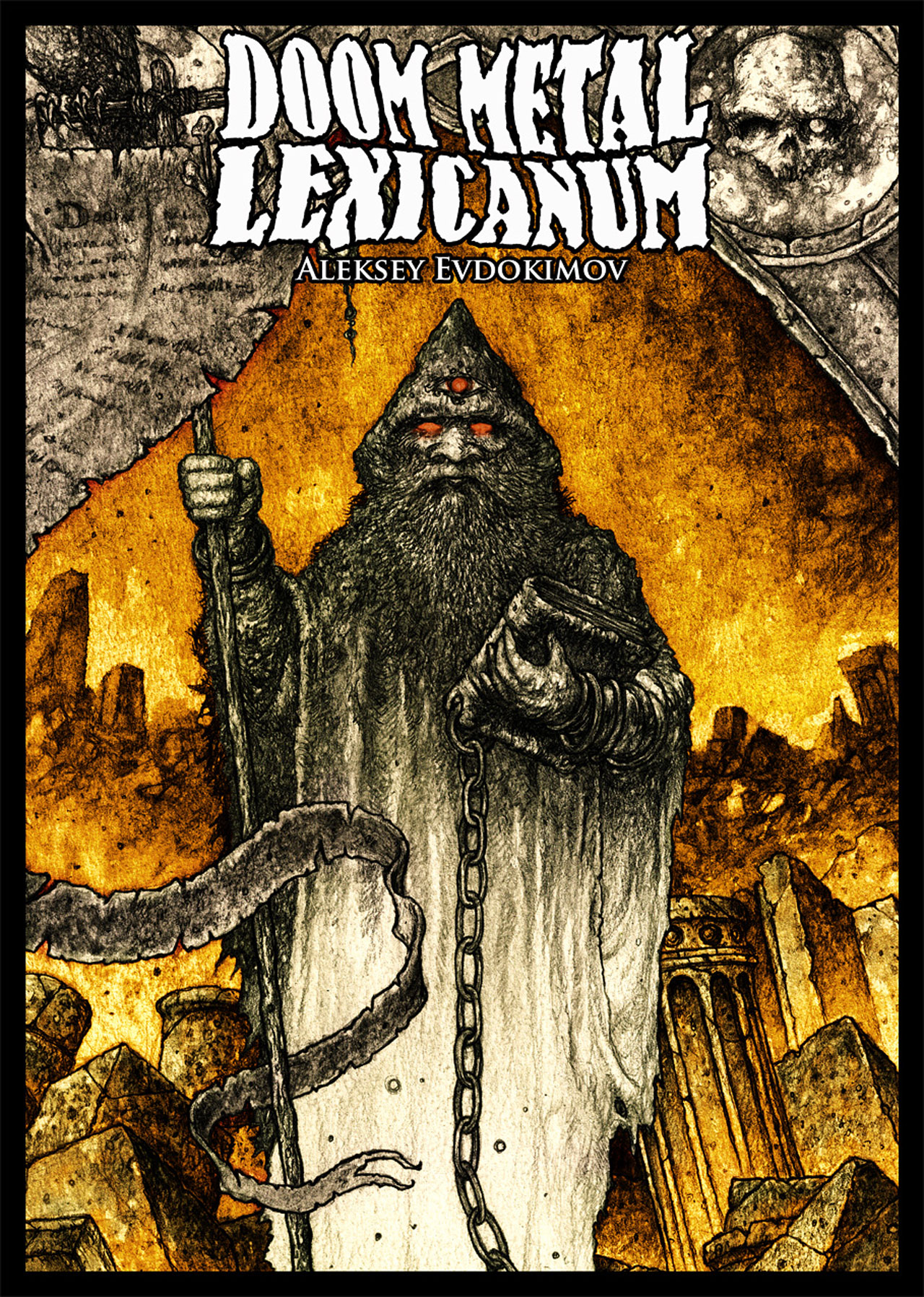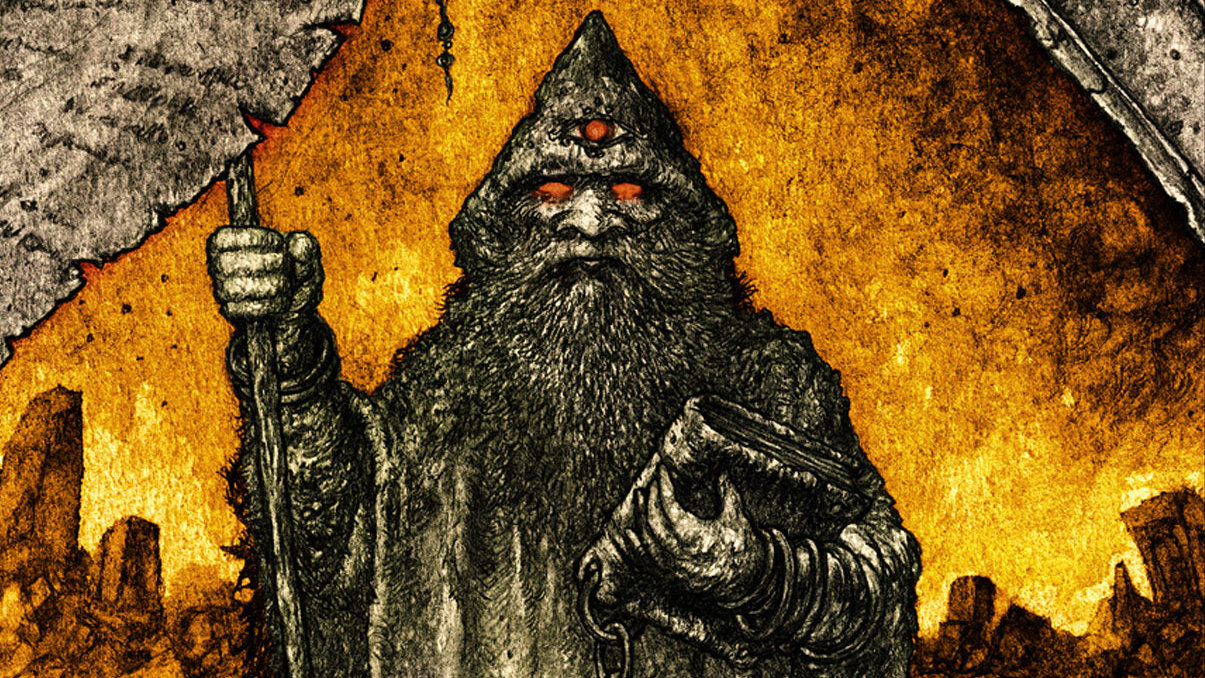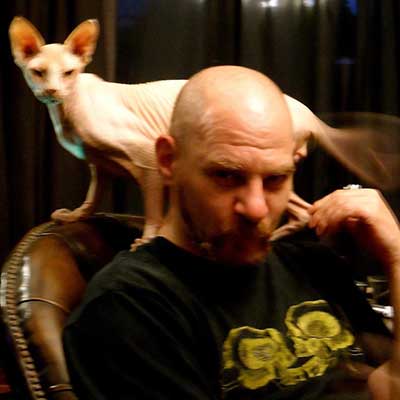If any area of the extreme metal world is worth embarking on a seemingly never-ending, sleep-depriving endeavour for, its the vast and weighty world of doom metal. Painstakingly put together by Russian journalist Aleksey Evdokimov, Doom Metal Lexicanum may not be the first book on the subject, but it is the first for nearly a decade and a half, offering an overview – complete with interviews – of over 350 of the most significant bands determined to smelt time and slow riffs down to their most resonant and revealing pitch.
Published by Hammer scribe Dayal Patterson’s Cult Never Dies/Crypt Publications, the 300,000 words, 300 pages and 400 pics that comprise this tome of heaviousity, come wrapped in suitably ornate, Destiny and destruction-depicting artwork by David Thiérrée (also available in signed art print form as part of a bundle here), along with essays by former Reverend Bizarre frontman Sami Hynninen and more.
What on earth, pit of Hell, sickening Lovecraftian dimension or whatever plane of existence is deemed most relevant, possessed Aleksey to take on such an undoubtedly torturous labour of love? We spoke to the man himself about endless nights, the delirium of doom and the measureless stress of playing god…
When did you start working on Doom Metal Lexicanum, and did you have any idea at the time what a huge undertaking it was going to prove to be?
“Actually I thought it was going to be an easier task than it was. I started it in autumn 2015 with the list of 550–600 bands, and from some point it was obvious that it was better to have a smaller number of bands, to fit it all in one book. I focused on the traditional doom metal scene and related subgenres like epic doom, doom metal with stoner or progressive influences and some ‘proto’ or ‘doom rock’ bands. I understood that …Lexicanum is the first book for almost 14 years about this obscure part of the metal scene, so I needed to pick bands carefully. But for me it was necessary to show the scene’s development in different directions from its first years to the present, even though it took the form of a pretty big and detailed guide.”
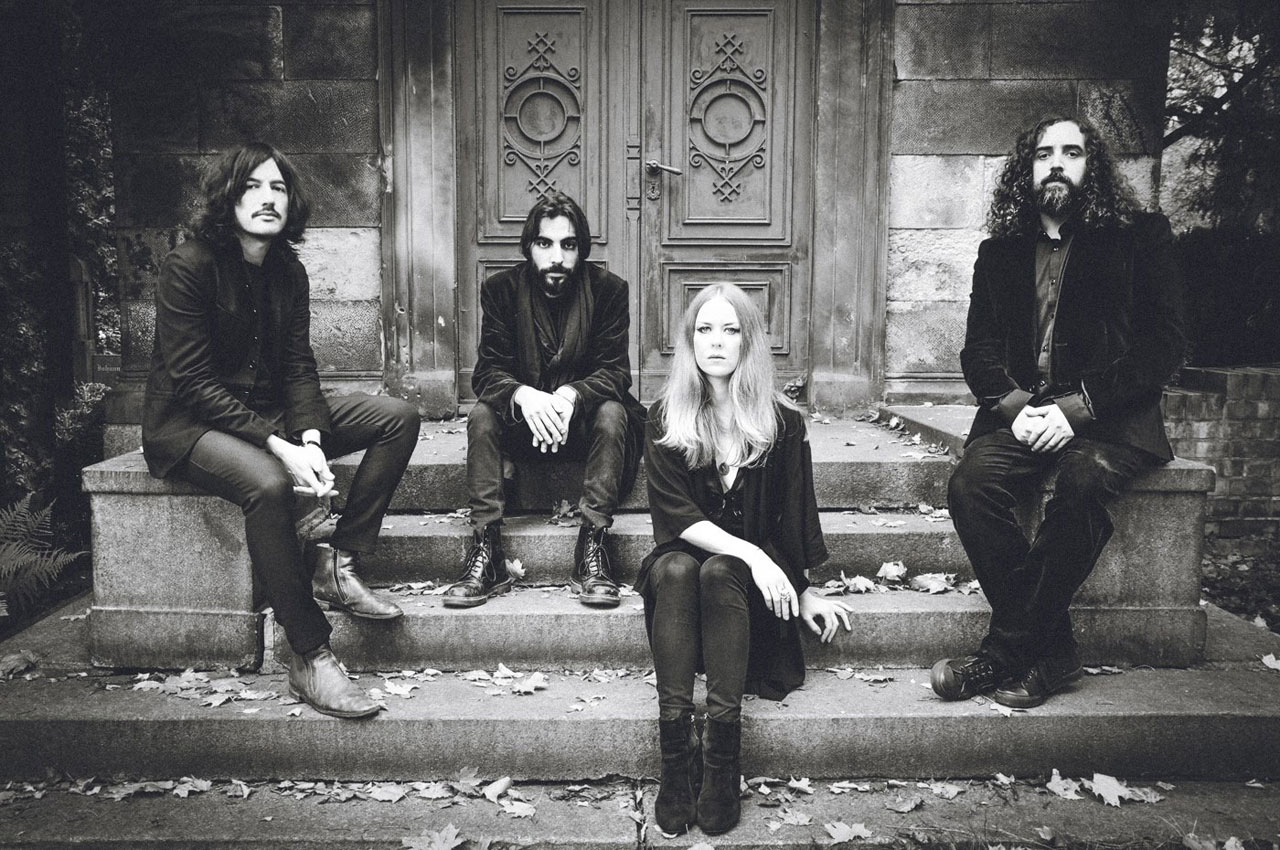
How difficult was it to work out who you could include in the book and who you had to leave out? Did you have any specific criteria? Which bands were the hardest to leave out?
“At first it wasn’t difficult at all. I started with the bands I knew well. One of main goals was to include a direct quote from one of the band’s members in each article. I wanted to show a band’s aspect from inside, to give readers an objective point of view. So I used all interviews I have done over the years, I did interview some bands anew and I discovered new bands as well, of course. It was necessary to include core bands who influenced on the genre the most: Candlemass, Cathedral, Electric Wizard, Pentagram, Saint Vitus, Trouble and few more. It was also necessary to introduce some modern doom bands to readers who may otherwise skip their albums: Book Of Wyrms, Haunted, Lord Vigo, Messa, Naked Star, Night Gaunt, Obsidian Sea and Pesta. I also included those who are already known to doom followers: Barabbas, Black Pyramid, Cauchemar, Iron Void, Seamount and others. And of course there are bands who stands between forefathers and new doom followers, such as Acid King, Count Raven, Penance, Spiritus Mortis.
“I really wanted to put there more bands, but since the book was finished, a couple of dozen new good bands did appear. It threatened to turn into an endless cycle. The hardest part was when I had a bunch of good new interviews and couldn’t do anything to fit these bands in the book. Really, sleepless nights aren’t as bad as that feeling.”

How much was compiling this book a journey of discovery for you? What were the biggest revelations you encountered while writing it? Did you discover connections you weren’t aware of previously?
“Probably careful re-listening of the whole Candlemass and Cathedral discographies was the most serious trip. I’ve spent from seven to 10 days for each of these bands, listening again and again to some of their albums, including controversial ones and carefully studying the lyrics. It was an intense period and I was just happy when I reached Cathedral’s The Guessing Game, the most progressive and light-mooded album in their discography, particularly because I was overloaded with riff-based, low-tuned and distorted songs at that moment.
“Usually bands’ influences are an obvious thing, so I was rather really thrilled with stories around some certain albums or even songs. But honestly I met so many conceptual tropes/clichés on my way. Lovecraft, horror movies, and witches burning are three main conceptual pillars of the doom cult. I did grow up on these sorts of songs, so usually it’s not a problem, but when you write the book and go through all these bands, it’s another story. And in fact we have some extra chapters in the book on the subjects of witchcraft and Lovecraft in doom metal. I also love how Reverend Bizarre crystallized the essence, the very spirit of doom metal with huge line of historical and fictional examples. There’s always something to discover in doom music.”
Of all the subgenres in the metal world, what was it about doom that you found so immersive? Is it a physical resonance with slow riffs, the evocation of other worlds, the personal catharsis?
“I joined the Doom Cult through Reverend Bizarre, they absolutely precisely collect the right images from history, folklore, pop culture and fiction to transfer the genre’s essence. And they illustrated it perfectly with music. So you can easily imagine Cromwell’s galloping ‘iron-sides’ or marching war elephant as well as figures from creepy and disturbing horror movies. They knew how to combine sonic and lyrical components in one solid incarnation of doom. I wouldn’t say that it’s too personal but when I’m listening to Dreaming, Naevus, Penance or Reverend Bizarre, but something inside resonates. And Sami from Reverend Bizarre provided some great material in the book, both on his own bands and occultism in doom metal.”
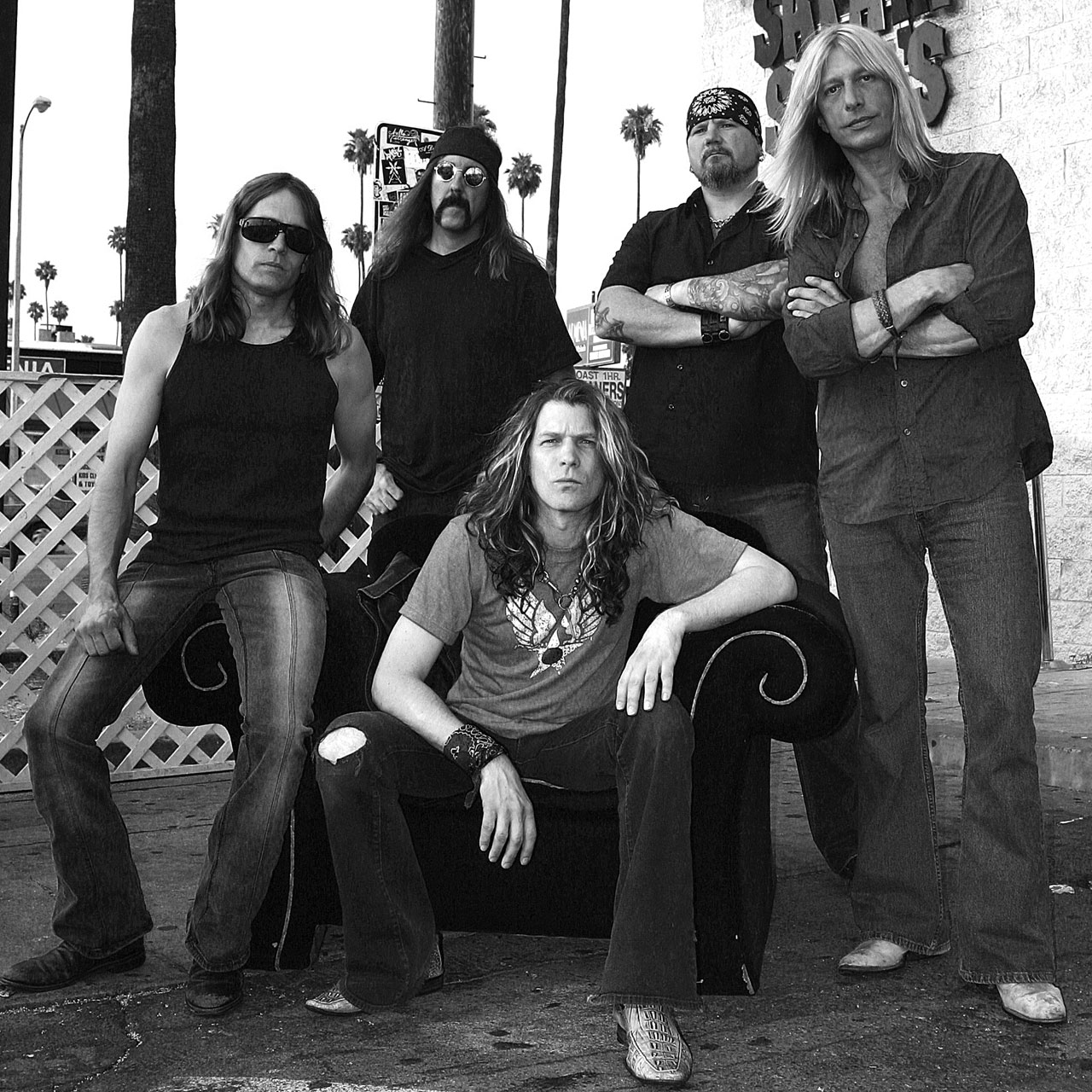
Did it inspire any deeper interests of your own into common reference points like Lovecraft’s mythos, Satanic/exploitation movies, fantasy books?
“I was already into fantasy and Lovecraft, and as mentioned there is a chapter that examines the Lovecraftian myth’s influence on doom bands. There’s also a short glimpse on witches’ role in doom metal via Sami. However I’ve learnt more about horror movie culture. I was born in 1983, and this stuff wasn’t popular in Russia back then. So in school years I rather learnt about movies from 80s like Hellraiser, Phantasm, The Thing and some zombie movies. I like the atmosphere of movies with bleak landscapes or some haunted mansions. I guess that it’s safe place for many of us, something connected with childhood when you enter the world of supernatural horrors.
“As for Satanic/exploitation movies, one of my family members works in a rehabilitation centre for people who suffered from domestic violence, drug or alcohol addiction. That’s real. And these real horrors happen next door to you, so to answer the question I’d say that I saw almost two of such movies, but I don’t see scenes of violence and exploitations as entertainment.”
Doom Metal Lexicanum and Cult Never Dies looks like a perfect partnership. What did you find working with this publisher that other potential outlets couldn’t give you?
“Dayal Patterson was the only person really interested into my project. And I suppose that he’s a fanatic, so it was easy to find common ground. He was whole into it! We surprisingly swiftly came to understanding each other, and in the following months I was only convinced that it was the best choice. I appreciate his professionalism and his tempo of working. And I really enjoyed last periods of our collaboration when we were verifying the layout. It was exhausting for both of us, it was time consuming task, but I like how we deal with it.”
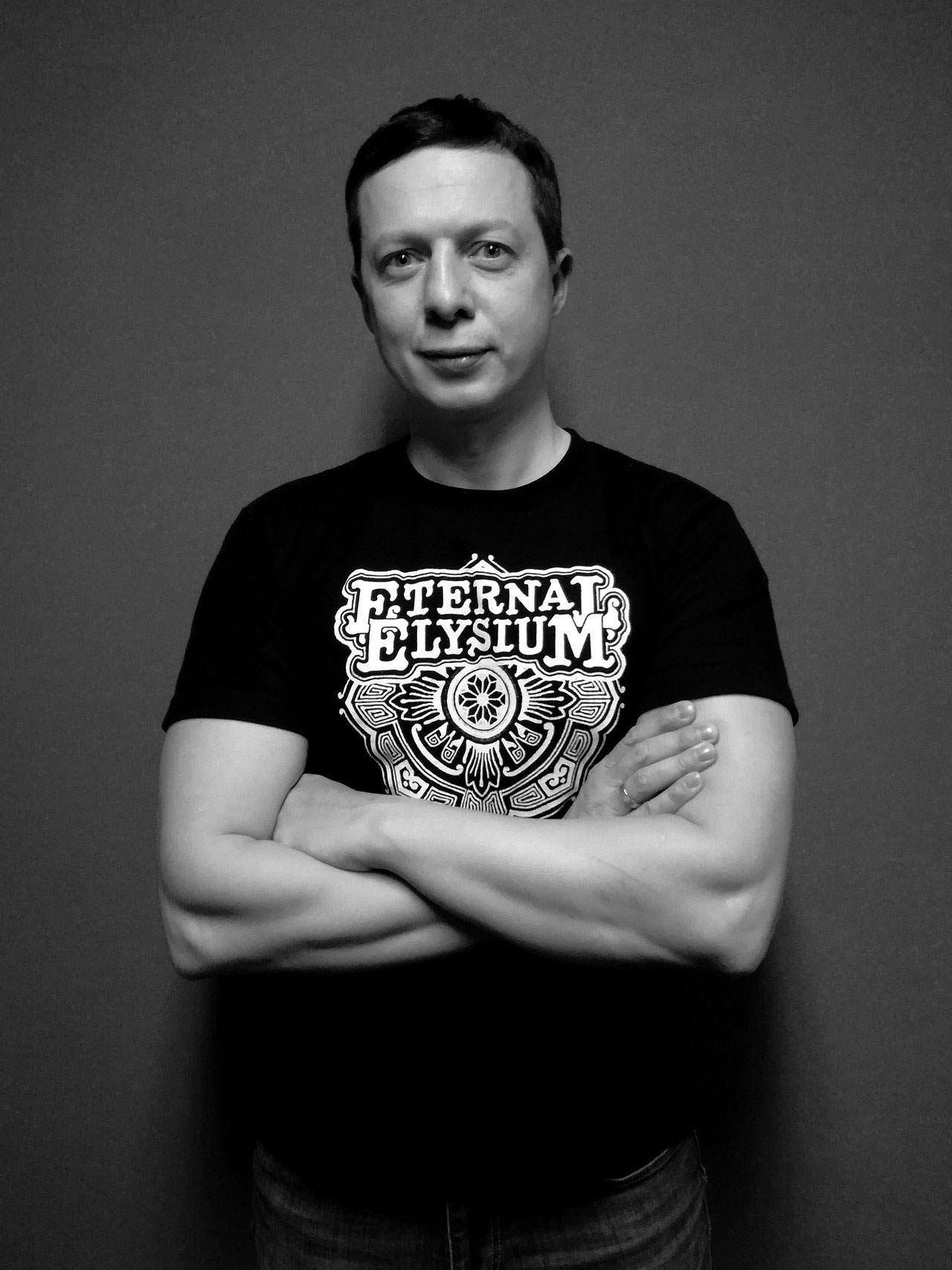
I imagine this isn’t the end of the endeavour. Do you have any further projects in the pipeline?
“Besides returning to regular sleep cycles? I was thinking it’s over when I finished the article about the last band for …Lexicanum, but it turns out to be my obsession. I can’t sit calmly when I see an opportunity to continue the work, to finish it. For few weeks I was tortured by the idea that I know now how organise everything according the second book better, more effectively. A tome focused on extreme doom metal scene is necessary. But I can’t tell you anything certain besides the fact that I’m thinking over that plan in general. It depends on few factors, and the most crucial amongst them is my time management. However I have an idea how to solve this problem, and the monkey will be on my back again soon.”
Doom Metal Lexicanum is published by Crypt Publications. Order your copy here!
